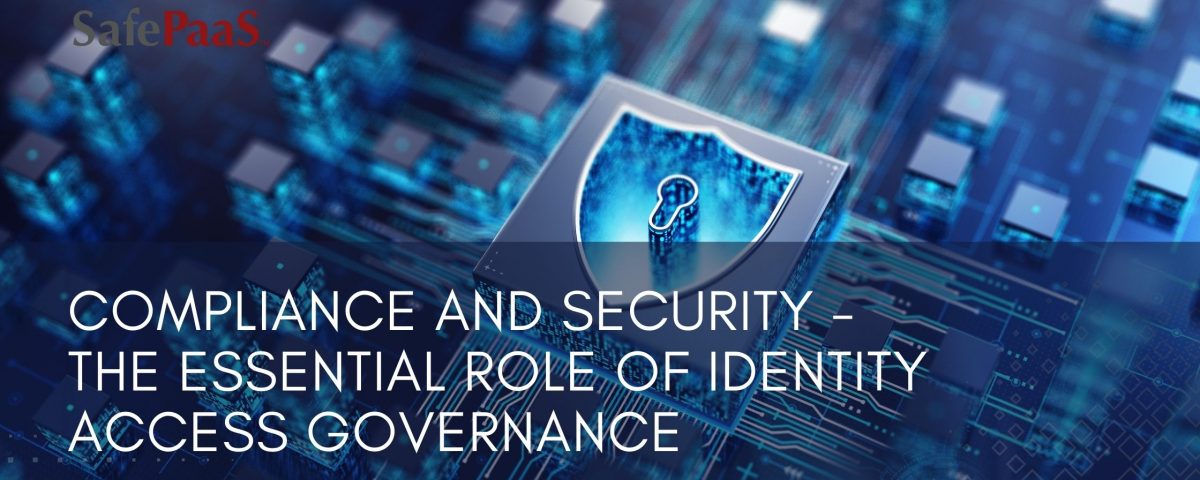The Essential Role of Identity Access Governance


Strengthening Compliance and Security:
The Essential Role of Modern Identity Access Governance
Today's security environment is treacherous, where data is incredibly valuable, and noncompliance for failing to secure that data results in huge penalties. Your organization faces the critical project of securing systems and ensuring compliance with regulatory standards. Identity Access Governance (IAG) is vital to addressing the challenges of dynamic business requirements, ensuring regulatory compliance, and enhancing overall security by focusing on identity as the central component of the security perimeter.
Understanding Identity Access Governance
Identity Access Governance (IAG) is often used interchangeably with Identity Governance Administration (IGA), and both cover identity governance and access management. These terms refer to the policies, processes, and technologies ensuring users have access based on policies and responsibilities to ensure security, compliance, and efficiency.
IAG focuses on managing the identity lifecycle to manage and control user access to critical resources, systems, and sensitive data.
At its core, IAG addresses three fundamental questions:
Who has access to what?
What are users doing with their access?
Should users have that access?
Choosing the Right Identity Access Governance Solution to Simplify Compliance
Regulatory activity has risen over the last decade and doesn't look to be slowing down in 2024. Compliance with regulatory requirements like GDPR, HIPAA, SOX, and others is a fundamental organizational responsibility. IAG plays a key role in enabling and supporting your compliance efforts with capabilities like:
1. Policy-Based Access Control (PBAC)
PBAC is the foundation for efficient access management by aligning user permissions with predefined policies. It ensures access adheres to specific criteria, streamlining the process while meeting compliance mandates. PBAC enhances compliance and dynamically manages access permissions by operating on defined policies.
2. Auditable Access Reviews
Regularly reviewing and certifying user access is crucial for meeting compliance standards. IAG platforms automate the access review process, providing a mechanism for auditable reviews. This ensures that users have appropriate access, and demonstrating compliance during audits is simplified.
3. Policy Enforcement and Accountability
IAG solutions enforce access policies, ensuring users adhere to predefined rules. This not only prevents unauthorized access but also establishes accountability within your organization. The ability to enforce policies aligns with compliance requirements, mandating strict control over user access and data handling.
4. Access Restriction for Reduced Attack Surface
The ability to restrict user access to the basic requirements of their roles reduces the attack surface. In the event of a compromised user account, the potential impact is limited by the restricted access permissions associated with that specific account.
5. Continuous Monitoring for Insider Threat Detection and Prevention
The ability to continuously monitor user activities is crucial for detecting and preventing insider threats, both intentional and accidental. Inherent features such as automated alerting and response mechanisms enable the prevention of security incidents before they escalate.
6. Efficient User Onboarding and Offboarding Processes
Streamlined user onboarding and offboarding processes are essential for swift access provisioning and revocation. This reduces security risks associated with inactive or unauthorized accounts. The focus is on optimizing the efficiency of these processes to enhance security measures and compliance.
Selecting the right IAG solution is crucial, and key considerations should look at scalability, integration capabilities, and automation features.
Amidst heightened security threats and increased regulatory scrutiny, Identity Access Governance is key for organizations aiming to strengthen compliance and security.
By proactively managing user access, enforcing policies, and integrating advanced security measures, IAG solutions can address current challenges and requirements, allowing your organizations to remain agile.
Want to learn more about how SafePaaS can upgrade your security and compliance?
Recommended Resources

Mastering Identity Governance
Identity Governance is a security framework and set of processes that ensure the right users have access to the right resources at the right time. It involves managing user identities, roles, and access rights in your organization's IT environment.

7 Best Practices for Identity Governance
By adopting these best practices, your organization can enhance its cybersecurity posture, mitigate potential threats, and build a foundation for a trustworthy and resilient digital environment.

The Policy-based Identity Governance Guidebook
Many organizations grapple with IGA processes, like creating and managing roles, assigning and reviewing access entitlements, and handling access requests. The primary cause is that organizations follow the wrong approach to IGA, particularly around creating and managing roles.

